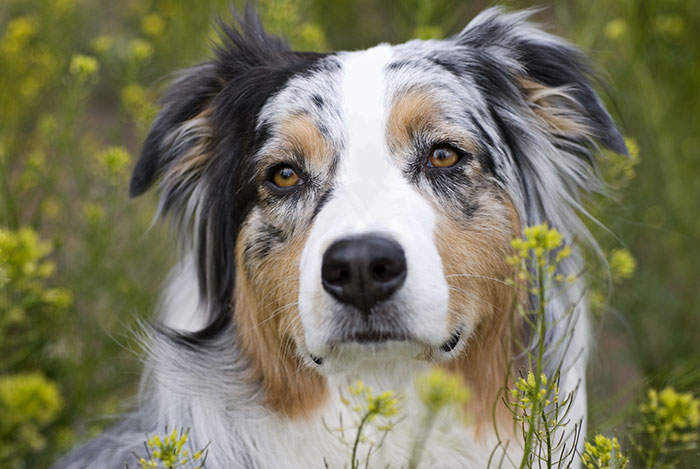Dog Skin Pigmentation Changes: Why Has My Dog’s Skin Changed Color?
Dog skin color is determined by cells that produce pigment, melanin. As a result, different breeds come with different skin colors. So what does it mean when your dog’s skin color changes?

Like with any change, it’s essential to pay attention.
Systemic
Yellow skin
If your dog’s skin turns yellow–called jaundice–this is serious. Although you’re more likely to notice jaundice in the whites of the eyes and on the gums, it can affect the skin also.
Jaundice is caused by the deposition of pigments, a byproduct of the breakdown of dead red blood cells in the liver. Normally, these pigments end up in bile, go through the digestive system, and leave the body with poop.
When these pigments end up deposited in the skin instead, it means one of three things:
- the liver is unwell and unable to do its job
- the bile duct is obstructed
- too many red blood cells die, and the liver is unable to keep up
If your dog’s skin turns yellow, they are very sick and need medical attention as soon as possible.
Blue/purple skin
If your dog’s mucous membranes, tongue, or skin turn blue, this is called cyanosis–this is an emergency. Cyanosis happens when the body tissues are not getting enough oxygen. Either there is insufficient oxygen getting into the body, or it’s not adequately distributed.
Either there is a problem with your dog’s circulation, respiratory system, blood, or nervous system.
If your dog’s skin turns blue, they have a life-threatening problem that requires immediate medical help.
Localized or in patches
Blue/purple/yellow areas or dots
Bruises cover much of the color spectrum as they age. Bruise colors go from red to blue and dark purple to pale green and yellow or brown. If you sigh a breath of relief, though, don’t–your dog is bleeding under their skin.
Dogs don’t bruise nearly as easily as we do. Finding bruises on their skin is a serious business unless your dog just had surgery. It means one of two things
- their blood isn’t clotting properly
- their blood vessels are unable to contain the blood where it belongs
If you find bruising on your dog, you might be looking at
- serious trauma
- poisoning
- serious infections
- auto-immune disease
- cancer
- and other scary stuff
Darkening of the skin (hyperpigmentation)
Also referred to as acanthosis nigricans, the skin’s darkening [and thickening] can result from various conditions. It can be hereditary, but that’s quite rare and generally happens only with Dachshunds.
Commonly, your dog’s skin can darken in response to inflammatory conditions. Skin can get inflamed because of
- allergies
- skin infections
- immune or hormonal disorders
In any case, dark and thickened skin points to a chronic issue.
Poor thyroid function (hypothyroidism) is one of the top suspects. If combined with a bad smell, there is a good chance the underlying cause is a bacterial or fungal infection. These infections can be secondary to hypothyroidism or allergies.
Red skin
Red skin is inflamed (or hot) skin. Whether you’re looking at an infection, allergies, or auto-immune disease, it will also be itchy, painful, or both.
Loss of pigment
Loss of pigment is often a cosmetic condition with no connection to any serious health issues.
Depigmentation can be the result of aging or changing seasons. Some breeds, for example, have a genetic predisposition to a seasonal lightening of their nose, a condition also referred to as snow nose. In addition, a relatively rare condition, vitiligo, causes the skin to lose its pigment–in patches.
In some cases, loss of pigment can be caused by infections (e.g.aspergillosis) or an auto-immune disease.
Related articles:
Jaundice (Icterus)
Unexplained Bruising
Further reading:
Causes of Skin Pigmentation Changes in Dogs

This is a lot more serious that I imagined it could be so thank you for a fascinating post.
Surely you will save lives by alerting people to the many issues that should have them in the vet’s office fast!
I had no idea some dogs noses undergo seasonal changes too (that made me smile).
Really interesting and something I have never thought about but so good to know now, thanks as always for opening my eyes
This is truly an interesting article! This is a subject I’ve often wondered about. Your article answered the questions of what to look out for with changing pigmentation colors. Excellent work! I’m sharing with all my dog parents!
I haven’t paid much attention to my Husky’s skin because it’s so hard to see with her dense fur. But she does get snow nose in the Winter!